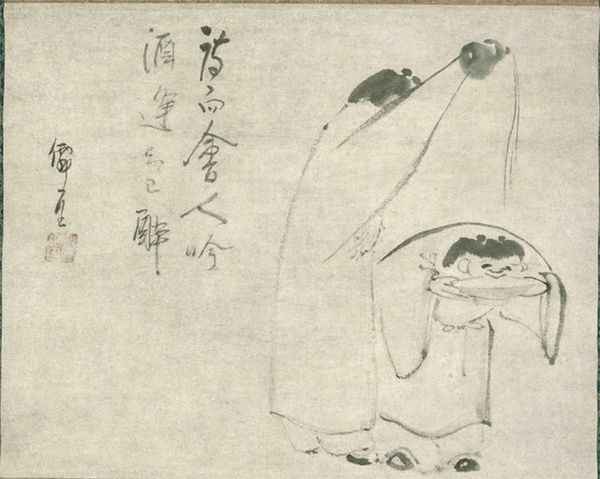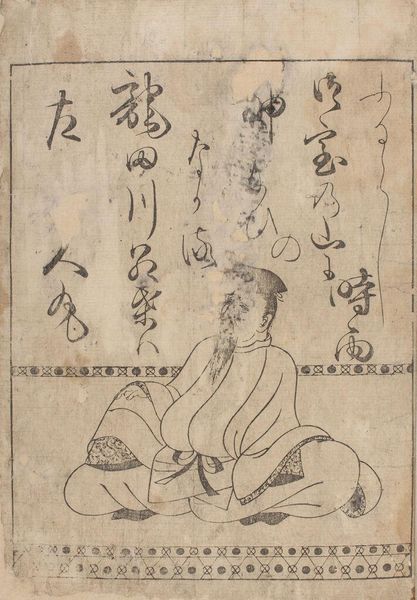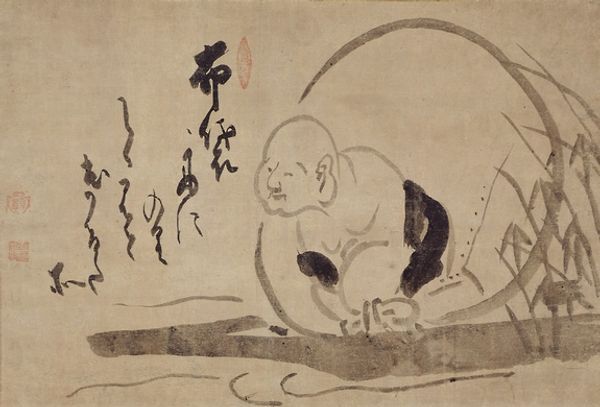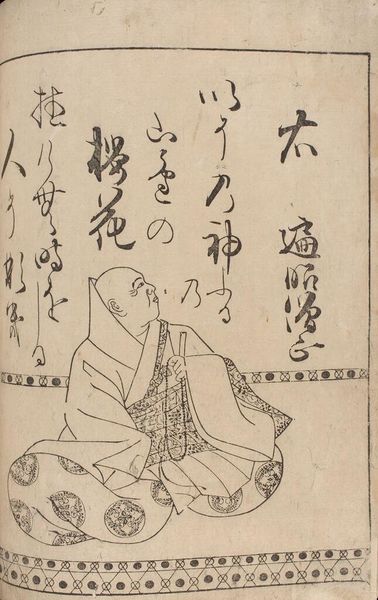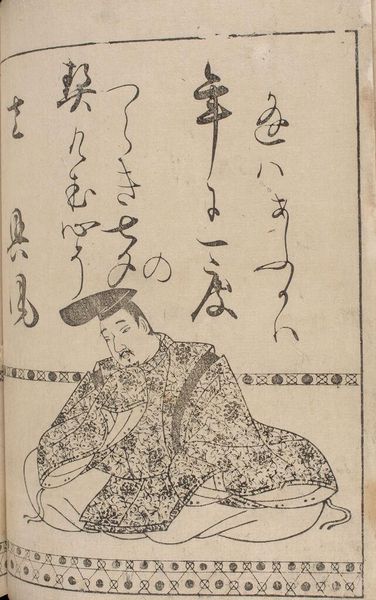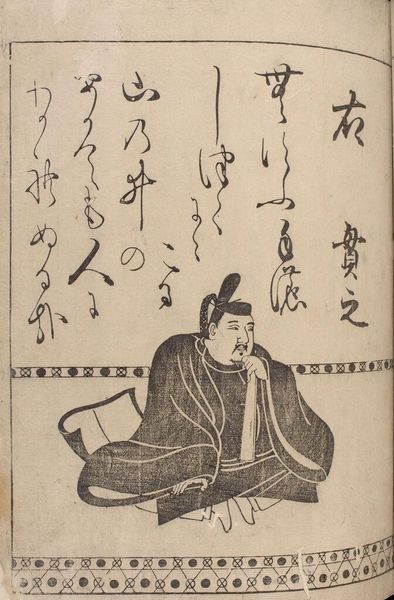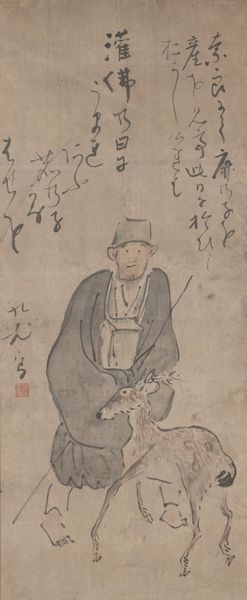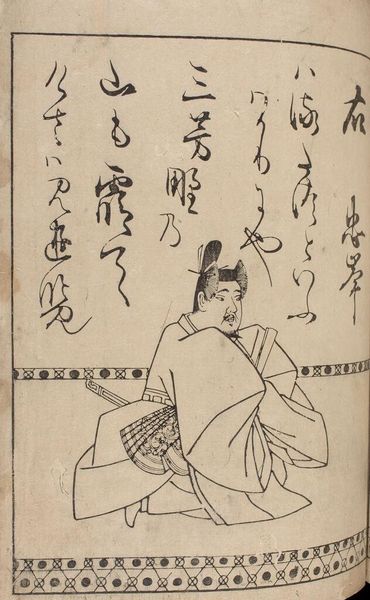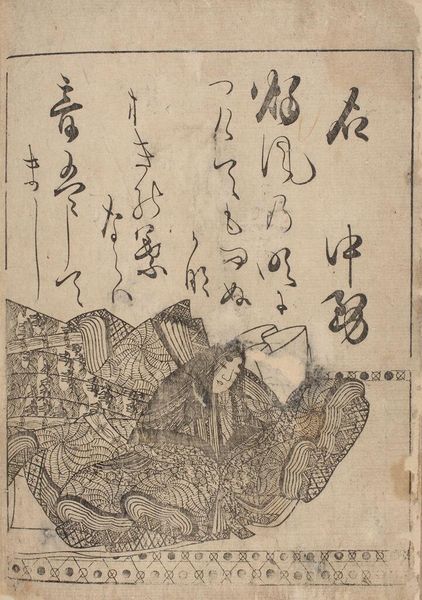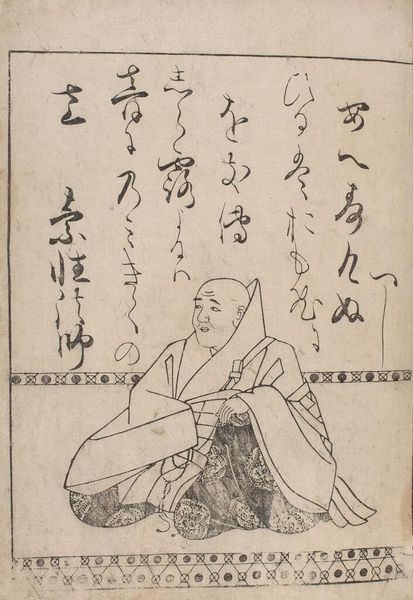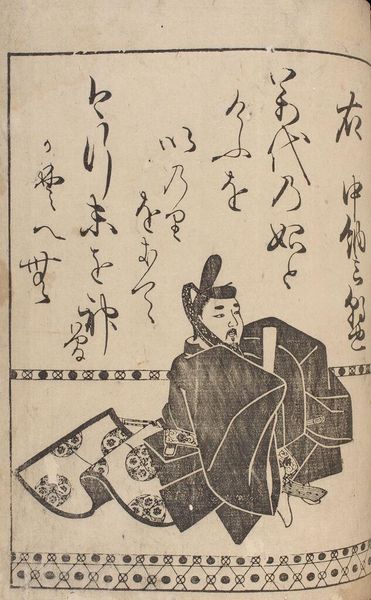
drawing, ink
#
portrait
#
drawing
#
asian-art
#
figuration
#
ink
#
ink drawing experimentation
#
sketch
#
men
#
sketchbook drawing
#
calligraphy
Copyright: Public domain
Curator: Looking at this striking ink drawing titled “Hitomaro,” made by Hakuin Ekaku, one immediately notices the confident brushstrokes and the sense of immediacy. It feels less like a formal portrait and more like a captured moment. What do you make of it at first glance? Editor: There’s an arresting vitality in its lines. It is raw, capturing, and a kind of gestural power I often see lacking in more rendered portraits. There's an incredible personality bursting through. It feels very intimate, almost a glimpse behind a constructed persona. Curator: It is interesting to consider that Hakuin's focus was not simply capturing a likeness but conveying a spiritual state or philosophical concept. While named “Hitomaro," suggesting a portrait of the renowned Japanese poet Kakinomoto no Hitomaro, the essence here seems to transcend mere representation. Editor: It makes me consider representation, and how through the visual flattening afforded through this type of line drawing, there's a democratization occurring. We lose hyper-specificity of race, which historically allows more insidious forms of power to perpetuate... Through abstraction, who does this man represent? Curator: Indeed. Ink drawings were integral to Zen practice, and portraits within this tradition were less about outward appearance and more about inward character and enlightenment. It functioned within a precise cultural framework. Editor: So much of what appears radical often is entrenched in those cultural norms. In thinking about enlightenment, then, where and for whom is that even a possibility? When viewing art, I want to reconcile that cultural function with what meaning and new interpretations we can make today. Curator: And isn’t that constant renegotiation precisely where art history thrives—recognizing both the historical forces that shaped creation and the contemporary lenses that continually reshape its meaning? Editor: Precisely! It is why art matters, offering us this critical discourse across time. This piece seems an open invitation into just that sort of conversation.
Comments
No comments
Be the first to comment and join the conversation on the ultimate creative platform.
